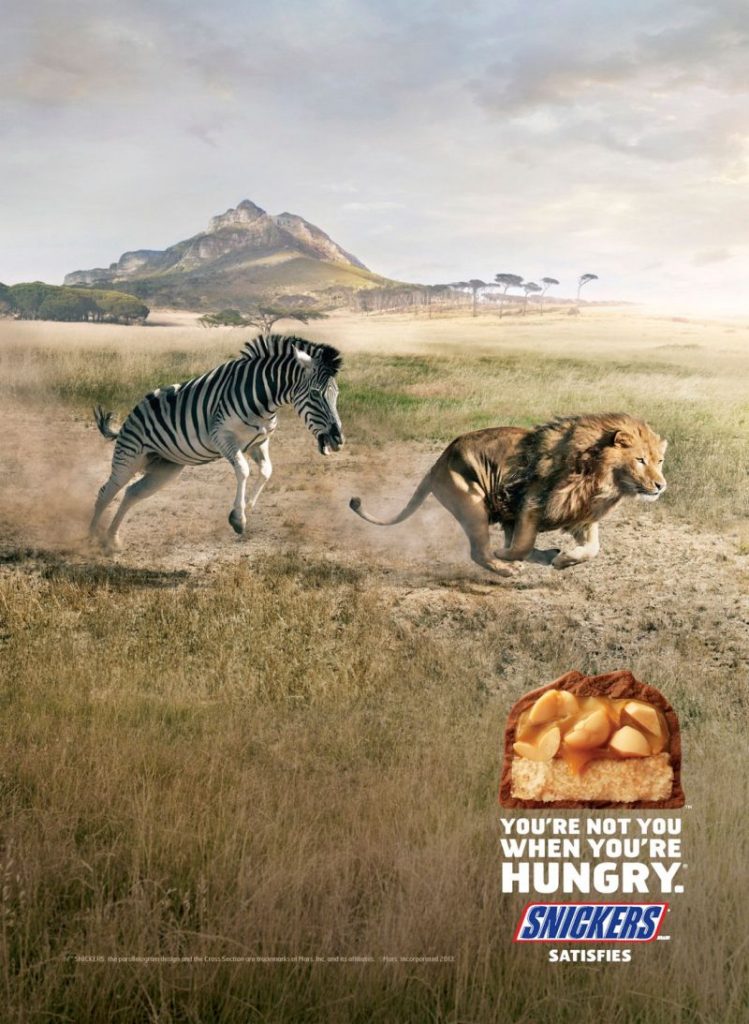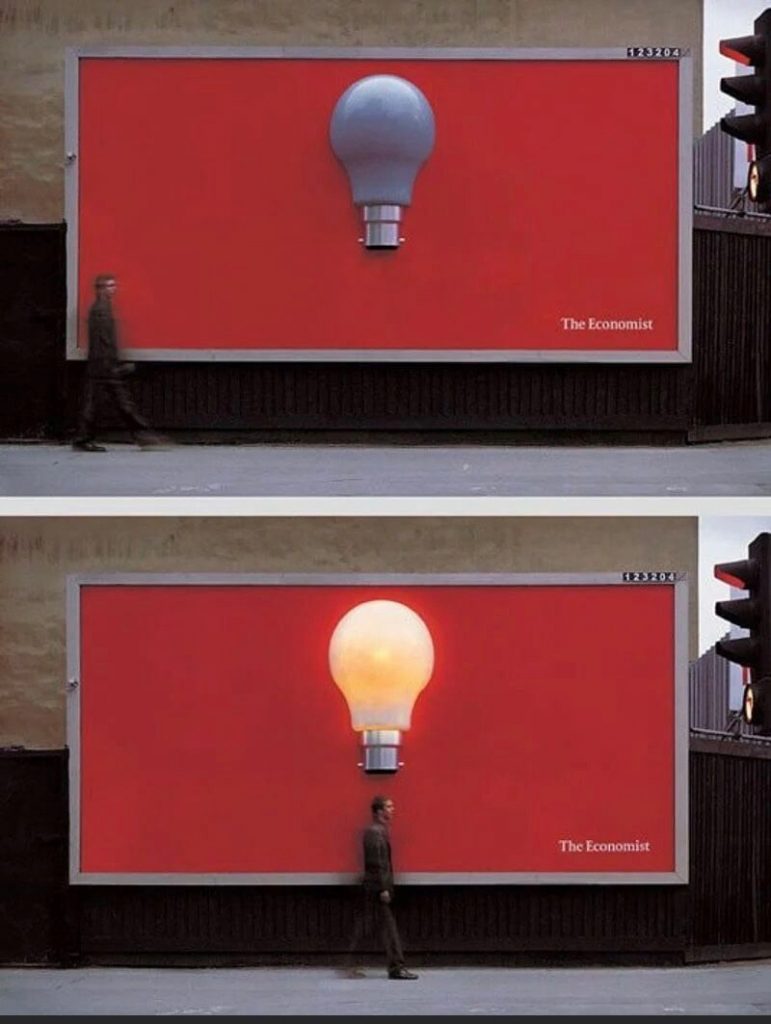
Author: David Greenwood
💎 Three rules for writing (do you know them?)
I suppose if I had to pick a favorite rule, I would paraphrase a man with a particular genius for scattering the alphabet on the page, W Somerset Maugham: there are three rules for copywriting. Unfortunately, no one knows what they are.
Excerpt from: Copywriting Is…: 30-or-so Thoughts on Thinking like a Copywriter by Andrew Boulton
♦️ BMW That’s A Sign

💎 On steering clear of the thesaurus when writing copy (simplicity)
Likewise, Roddy Doyle’s quip about keeping your thesaurus in a shed or behind the fridge – ‘somewhere that demands travel or effort’ – is a handsome piece of copywriting advice. Doyle’s belief that the word you think of first is most often the best is reinforced by the kind of anxious copy that reads as if every word has been ground through the synonym sausage machine.
Excerpt from: Copywriting Is…: 30-or-so Thoughts on Thinking like a Copywriter by Andrew Boulton
💎 On strategic padding to set expectations
researchers at the Kellogg School of Business. The researchers found that published flight times had increased over 8 percent in the past twenty years. But this increase was due not to changes in the time it actually takes to get from point A to point B. Rather, they found that this extra time was “strategic padding.” Airlines intentionally reported flight times as being longer than expected so that they could positively surprise customers in flight when they announced the early arrival time (which was-actually the: real estimated arrival time all along). On-time or ahead-of-schedule flight arrivals result in happy customers. And our idea about what is on time or ahead of schedule has everything to do with the expectations that are set.
Excerpt from: Blindsight: The (Mostly) Hidden Ways Marketing Reshapes Our Brains by Matt Johnson and Prince Ghuman
♦️ Nescafe Energy

💎 On the value of changing your mind
With all due respect to the lessons of experience, I prefer the rigor of evidence. When a trio of psychologists conducted a comprehensive review of thirty-three studies, they found that in every one, the majority of answer revisions were from wrong to right. This phenomenon is known as the first-instinct fallacy.
In one demonstration, psychologists counted eraser marks on the exams of more than 1,500 students in Illinois. Only a quarter of the changes were from right to wrong, while half were from wrong to right. I’ve seen it in my own classroom year after year: my students’ final exams have surprisingly few eraser marks, but those who do rethink their first answers rather than staying anchored to them end up improving their scores.
Excerpt from: Think Again: The Power of Knowing What You Don’t Know by Adam Grant
♦️ French Health Department Benefits of COVID-19 Vaccine

💎 On using our understanding of the natural world to your advantage
In another life-and-death situation, in 1989 Bengal tigers killed about 60 villagers from India’s Ganges delta. No weapons seemed to work against them, including lacing dummies with live wires to shock the tigers away from human populations.
Then a student at the Science Club of Calcutta noticed that tigers only attacked when they thought they were unseen, and recalled that the patterns decorating some species of butterflies, beetles, and caterpillars look like big eyes, ostensibly to trick predators into thinking their prey was also watching them. The result: a human face mask, worn on the back of head. Remarkably, no one wearing a mask was attacked by a tiger for the next three years; anyone killed by tigers during that time had either refused to wear the mask, or had taken it off while working. — sidebar: Occam’s Razor in the Medical field
Excerpt from: The Great Mental Models Volume 1: General Thinking Concepts by Shane Parrish and Rhiannon Beaubien
♦️ Royal Mail It’s Coming Home

💎 If your ads make people laugh you’ll boost the chance your message is remembered
This finding was illustrated in a Pew Research poll, showing that viewers of humorous news show like The Daily Show and The Colbert Report remembered more about current events than people who consumed information from newspapers, cable news, or network news. And in one study, researchers found that people who watched a humorous film clip before taking a brief short-term memory test recalled more than twice as much information as people who took the same test after simply sitting doing nothing for the same duration.
Excerpt from: Humour, Seriously: Why Humour Is A Superpower At Work And In Life by Jennifer Aaker and Naomi Bagdonas
♦️ Snickers You’re Not You When Hungary

💎 How a little friction can aid memorability
Next Diemand-Yauman wanted to see if the same effect would true in a more realistic setting. He took the study to a high school Ohio in the United States) and tested 220 students. He screened classes for those where the same teacher had been teaching at least two classes of the same subject and difficulty level and with the same learning material. The experimenters took all the worksheets and PowerPoint slides and changed the font. (The experimenters did not meet the teachers or the students or visit the class.)
Classes were randomly assigned to either a disfluent or a control category. The disfluent classes used material that was switched to one of these fonts:
Resttonschweler
Monotype Corsiva
Comic Sans Italic
In the control classes, no changes were made to the fonts. Teachers and students didn’t know the hypothesis that was being studied. They didn’t know whether they were in a fluent or disfluent group. The Material was taught the same way it normally was taught. No other changes were made in the classrooms or the instruction. Students in the disfluent condition scored significantly higher on their regular classroom tests. On a survey asking if they liked their course or course material, there were no differences in these preference ratings. There was no difference among the different disfluent fonts.
Excerpt from: 100 Things Every Designer Needs to Know About People (Voices That Matter) by Susan Weinschenk
💎 On the different characteristics of successful versus average negotiators
The average negotiators went in armed for battle, hardly picking note of any anticipated areas of agreement. The experts, in contrast, mapped out a series of dance steps they might be able to take with the other side, devoting more than a third of their planning comments to finding common ground.
As the negotiators started discussing options and making proposals, a second difference emerged. Most people think of arguments as being like pair of scales: the more reasons we can pile up on our side, the more swill tip the balance in our favor. Yet the experts did the exact opposite: They actually presented fewer reasons to support their case. They didn’t want to water down their best points. As Rackham put it, “A weak argument generally dilutes a strong one.”
The more reasons we put on the table, the easier it is for people to discard the shakiest one. Once they reject one of our justifications, they can easily dismiss our entire case. That happened regularly to the average negotiators: they brought too many different weapons to battle.
Excerpt from: Think Again: The Power of Knowing What You Don’t Know by Adam Grant
♦️ McDonalds Happy Fathers day

💎 On the danger of only measuring the first order effects of an intervention
In 1963, the UC Santa Barbara ecologist and economist Garrett Hardin’ Proposed his First Law of Ecology: “You can never merely do one thing.” We operate in a world of multiple, overlapping connections, like a web, with many significant, yet obscure and unpredictable, relationships. He developed Second-order thinking into a tool, showing that if you don’t consider “the effects of the effects,” you can’t really claim to be doing any thinking at all.
When it comes to the overuse of antibiotics in meat, the first-order consequence is that the animals gain more weight per pound of food consumed, and thus there is profit for the farmer. Animals are sold by weight, so the less food you have to use to bulk them up, the more money you will make when you go to sell them.
The second-order effects, however, have many serious, negative consequences. The bacteria that survive this continued antibiotic exposure are antibiotic resistant. That means that the agricultural industry, when using these antibiotics as bulking agents, is allowing mass numbers of drug-resistant
Excerpt from: The Great Mental Models Volume 1: General Thinking Concepts by Shane Parrish and Rhiannon Beaubien
♦️ OMO Dirt is Good

💎 On the illusion of explanatory depth
isolation is powerful but misleading. For a start, while humans have accumulated a vast store of collective knowledge, each of us alone knows surprisingly little, certainly less than we imagine. In 2002, the psychologists Frank Keil and Leonid Rozenblit asked people to rate their own understanding of how zips work. The respondents answered confidently — after all, they used zips all the time. But when asked to explain how a zip works, they failed dismally. Similar results were found when people were asked to describe climate change and the economy. We know a lot less than we think we do about the world around us. Cognitive scientists call this ‘the illusion of explanatory depth’, or just ‘the knowledge illusion’.
Excerpt from: Conflicted: Why Arguments Are Tearing Us Apart and How They Can Bring Us Together by Ian Leslie
💎 How good negotiators focus on the image, or face, that their opposite number wants to portray
As you start talking, what impression of yourself do You want to convey? The sociologist Erving Goffman called this desired impression your face: the public image a person wants to establish in a social interaction.
We put effort into establishing the appropriate face for each encounter. The face you want to show a potential boss will be different to the face you want to show someone on a date. Goffman called this effort facework. With people we trust and know well, we don’t worry so much about face. With those we don’t know— especially if those people have some power over us — we put in the facework. When we put in the facework and we still don’t achieve the face we want, it feels bad. If you want to be seen as authoritative and someone treats you with minimal respect, you feel embarrassed and even humiliated.
Skillful disagreers don’t just think about their own face; they’re highly attuned to the other’ face. One of the most powerful social skills is the ability to give face: to confirm the public image that the other person wishes to project. You don’t need to be selfless to think this is important. In any conversation, when the other person feels their desired face is being accepted and confirmed, they’re going to be a lot easier to deal with, and more likely to listen to what you have to say.
Excerpt from: Conflicted: Why Arguments Are Tearing Us Apart and How They Can Bring Us Together by Ian Leslie
♦️ KitKat The Break You Need

💎 On self-praise being no commendation
Self-praise is no commendation. (If I say I am the best copywriter in Britain, you wouldn’t listen, if Dan Wieden said so, you might be fooled into believing it.) Also, raw statistics are more convincing than polished opinions. (A car that does 68 MPG sells better than one that’s “outstandingly economical”.) Beware of adjectives. They don’t always do what you think. (You’re all concerned about kitchen cleanliness but would you fancy a snack bar called “The Hygienic Café”?)
Excerpt from: D&Ad Copy Book by D&AD
♦️ BBC Euro 2020 Extra Practice

💎 On the advantage of being familiar with a number of accurate models of human behaviour, rather than just knowing a series of unrelated facts
In a famous speech in the 1990s, Charlie Munger summed up this approach to practical wisdom: “Well, the first rule is that you can’t really know anything if you just remember isolated facts and try and bang ‘em back. If the facts don’t hang together on a latticework of theory, you don’t have them in a usable form. You’ve got to have models in your head. And you’ve got to array your experience both vicarious and direct on this latticework of models. You may have noticed students who just try to remember and pound back what is remembered. Well, they fail in school and in life. You’ve got to hang experience on a latticework of models in your head.”
Excerpt from: The Great Mental Models Volume 1: General Thinking Concepts by Shane Parrish and Rhiannon Beaubien
💎 Bayesian thinking and the importance of applying a base rate when interpreting new data
The core of Bayesian thinking (or Bayesian updating, as it can be called) is this: given that we have limited but useful information about the world, and are constantly encountering new information, we should probably take into account what we already know when we learn something new. As much of it as possible. Bayesian thinking allows us to use all relevant prior information in making decisions. Statisticians might call it a base rate, taking in outside information about past situations like the one you’re in.
Consider the headline “Violent Stabbings on the Rise.” Without Bayesian thinking, you might become genuinely afraid because your chances of being a victim of assault or murder is higher than it was a few months ago. But a Bayesian approach will have you putting this information into the context of what you already know about violent crime. You know that violent crime has been declining to its lowest rates in decades. Your city is safer now than it has been since this measurement started. Let’s say your chance of being a victim of a stabbing last year was one in 10,000, or 0.01%. The article states, with accuracy, that violent crime has doubled. It is now two in 10,000, or 0.02%. Is that worth being terribly worried about? The prior information here is key. When we factor it in, we realize that our safety has not really been compromised.
Excerpt from: The Great Mental Models Volume 1: General Thinking Concepts by Shane Parrish and Rhiannon Beaubien
♦️ Toyota Tennis

💎 On copywriting (briefly)
So, gather your facts and get under the skin of your target. Talk to them in their language, not the Queen’s. What else? Be brief. I believe it was Pascal who added an apology to the bottom of a long letter, explaining that he hadn’t had time to write a short one. Why take twenty words to say what you could say in five? Why decide on a long copy ad when a poster-in-the-press will do? For most people, and particularly women who work outside as well as inside the home, money isn’t the most precious commodity these days; time is. We copywriters would do well to respect that.
Excerpt from: D&Ad Copy Book by D&AD
♦️ Lego Imagination

💎 On how the serial-position effect (we remember beginnings and ends best) can improve your presentations
Accept that many things in the middle of your presentation may be lost. If the middle is more than 20 minutes long, break it up with activities and exercises. By doing this you are essentially creating several small presentations within your presentation. That means each of these small presentations also has a beginning, middle, and end. Since people tend to remember beginnings and endings,
Try breaking up a presentation into several small “presentations” means that people will have a lot more beginnings and endings than middies—they will remember more information.
Excerpt from: 100 Things Every Designer Needs to Know About People (Voices That Matter) by Susan Weinschenk
💎 On how we can be trapped by our own perspective
The first flaw is perspective. We have a hard time seeing any system that we are in. Galileo’ had a great analogy to describe the limits of our default perspective. Imagine you are on a ship that has reached constant velocity (meaning without a change in speed or direction). You are below decks and there are no portholes. You drop a ball from your raised hand to the floor. To you, it looks as if the ball is dropping straight down, thereby confirming gravity is at work.
Now imagine you are a fish (with special x-ray vision) and you are watching this ship go past. You see the scientist inside, dropping a ball. You register the vertical change in the position of the ball. But you are also able to see a horizontal change. As the ball was pulled down by gravity it also shifted its position east by about 20 feet. The ship moved through the water and therefore so did the ball. The scientist on board, with no external point of reference, was not able to perceive this horizontal shift.
This analogy shows us the limits of our perception. We must be open to other perspectives if we truly want to understand the results of our actions. Despite feeling that we’ve got all the information, if we’re on the ship, the fish in the ocean has more he can share.
Excerpt from: The Great Mental Models Volume 1: General Thinking Concepts by Shane Parrish and Rhiannon Beaubien
♦️ The Economist Lightbulb






























